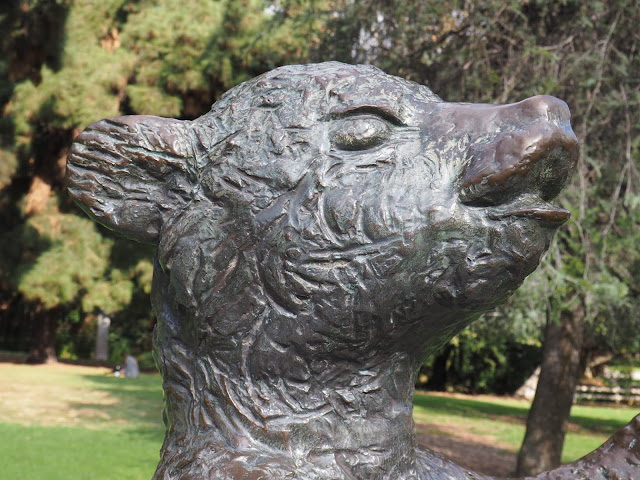There are many days when I wish that John Cage was still with us, for his compositions and his philosophy, and on a day like today, his mycological skills.
Cage was a mushroom hunter, an activity that requires a fair bit of walking, and he wrote in a somewhat ironic piece published as “Music Lover’s Field Companion,” “I have spent many pleasant hours in the woods conducting performances of my silent piece, transcriptions, that is, for an audience of myself, since they were much longer than the popular length which I have had published.”
He even taught a class in mushroom identification at the New School in New York which involved taking the class, on foraging expeditions, walking through the woods, but (the school decreed) only those woods accessible on public transport.
Cage has been on my mind because recently as I’ve walked around LA (a city which has scarcely seen a trickle of rain for the last several months), I keep seeing mushrooms and fungi growing in very unexpected places. Such as here on somebody’s lawn in Larchmont:
I suppose in this case the lawn has been watered perhaps overwatered through this long dry spell, and so perfect mushroom conditions have been created.
I suppose this must apply in the case below too, in Sawtelle, though this isn’t somebody’s garden but one of those little strips of grass between the road and the sidewalk. I didn’t notice a sprinkler system but I guess there must be one. And in fact that mushroom was even bigger than it looks in the photo.
And today, on my way to the dentist, I saw this (there were a couple of other very small, less impressive specimens nearby):
Since they’re growing out of a tree I don’t suppose they rely on watering, and the patch of ground the tree did look very dry, though that’s not to say it doesn’t get watered from time to time. I wish John Cage, or someone, had been there to identify the fungus. My best guess, from doing a reverse image search, is that it might be a Rhizina undulata, but I wouldn't want to put money on it.
Did you know that in 1959 Cage won $10,000 on an Italian quiz show Lascia o Raddoppia (Double or Nothing) by giving the 24 names of the white-spored Agaricus as described in Atkinson’s Studies of American Fungi.” Not just that, he listed them in alphabetical order,” which makes him a bit of a show- off, but when you’ve got the knowledge, why not flaunt it? He used the prize money to buy a piano and a Volkswagen bus Merce Cunningham's dance company. It wasn’t the sixties, but it was close. In 1969 Cunningham produced a dance piece titled Walkaround Time.















































